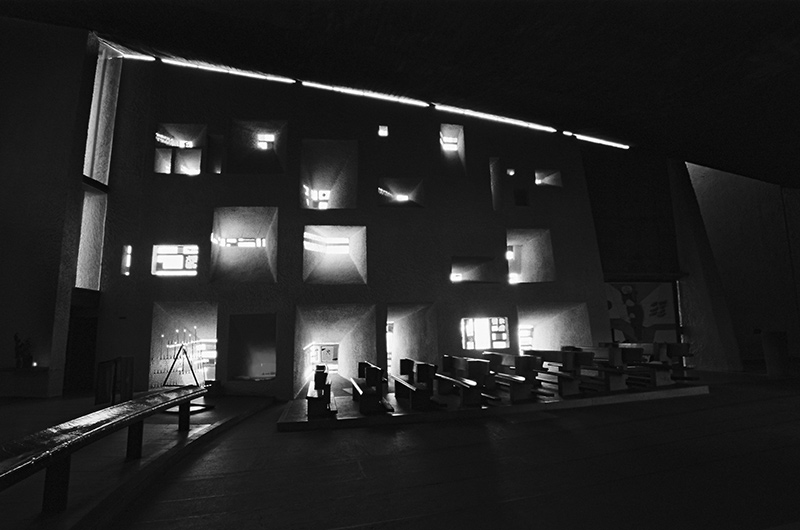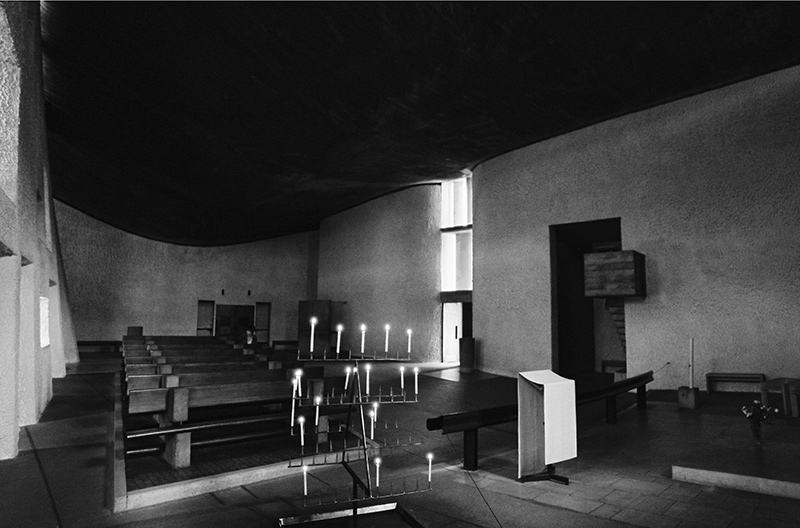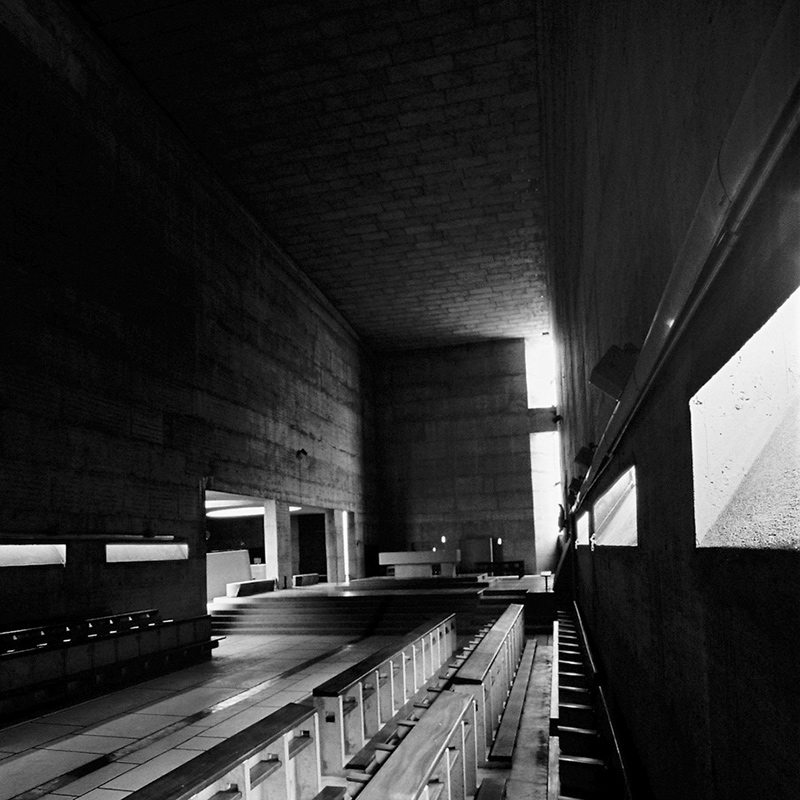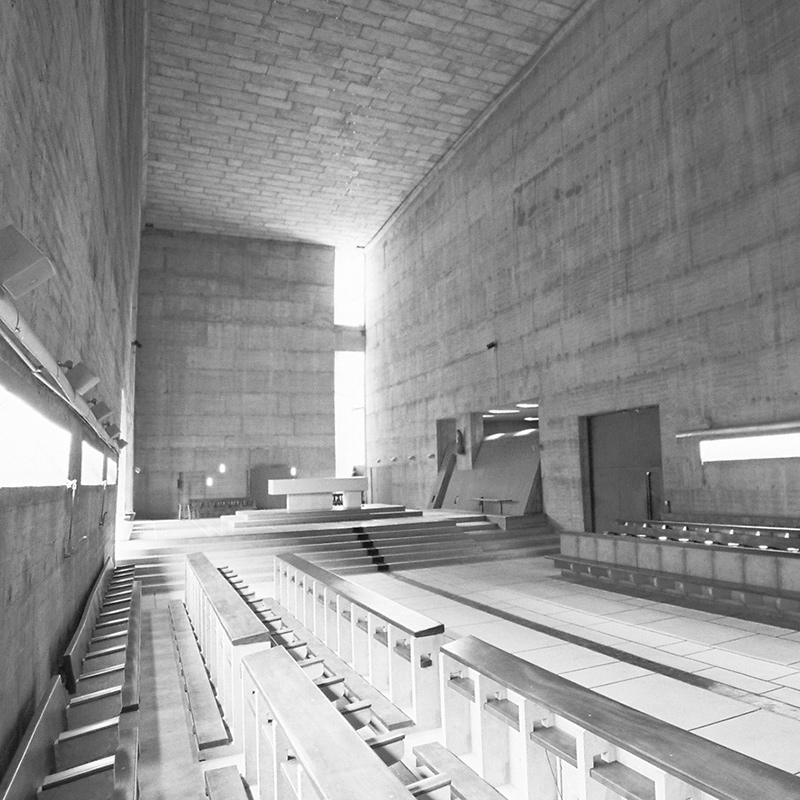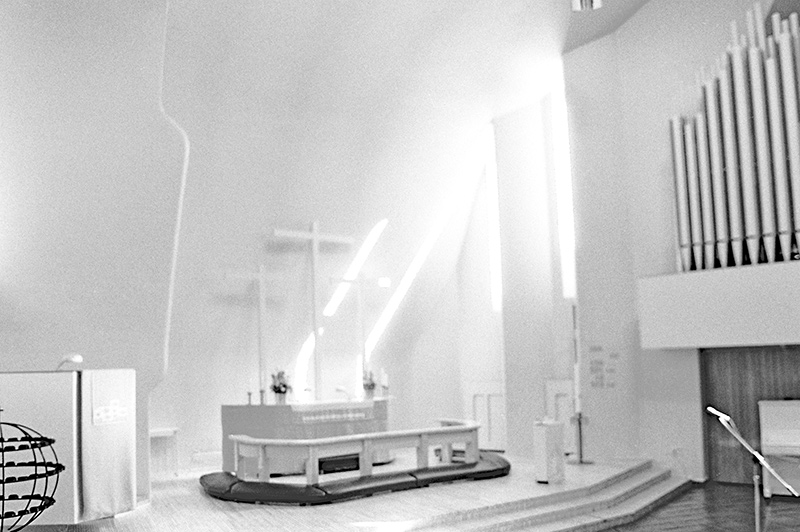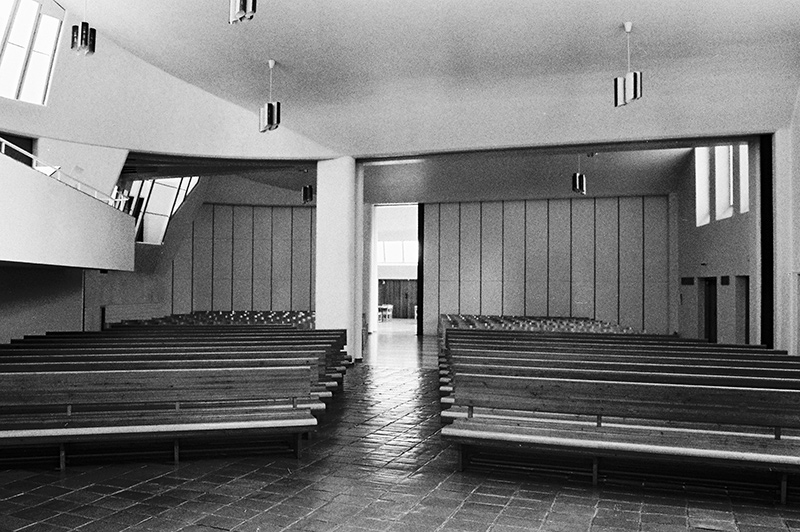Aims and Objectives 1
The objective is to explore the plastic potential of enclosed space. The means are the identification of spatial characteristics, then beyond these signifiers, the identification of states wherein the agency of light transfigures enclosed space into plastic art. The empirical definition and test of plasticity used here is identical to Le Corbusier’s notion of ‘plastic happenings’(5).
The body of work consists of spatial sculpture informed by analyses of architecture of profound plasticity. Observations across the canon from Ayasofya Müzesi, through Cathédrale Notre dame de Reims, to Sanct Petri kyrka, Klippan, Sweden, reveal spatial plasticity at its most sensual and illusory in the typology of the church, where the cosmic is present and meaning is spiritual.
Each church study is based on ten three day field studies, spanning the seasons and variations in usage. The presentation infers enclosed space and minimises imagery by centring on hand drawn orthographic projections including sun paths, based on visual surveys overlaying the most accurate available plans, and supported by annotated thumbnail photographs. The methodology describes the spatial containers, their light admitting apertures and artificial lighting. The consequent spatial characteristics and phases of discord and harmony are identified, and their significances interpreted.

